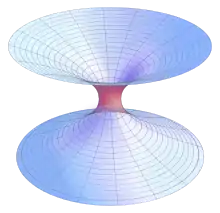Portal:The arts
T H E A R T S P O R T A L

The arts are a very wide range of human practices of creative expression, storytelling, and cultural participation. They encompass multiple diverse and plural modes of thinking, doing, and being, in an extremely broad range of media. Both highly dynamic and a characteristically constant feature of human life, they have developed into innovative, stylized, and sometimes intricate forms. This is often achieved through sustained and deliberate study, training, and/or theorizing within a particular tradition, across generations, and even between civilizations. The arts are a vehicle through which human beings cultivate distinct social, cultural, and individual identities while transmitting values, impressions, judgements, ideas, visions, spiritual meanings, patterns of life, and experiences across time and space.
Prominent examples of the arts include:
- visual arts (including architecture, ceramics, drawing, filmmaking, painting, photography, and sculpting)
- literary arts (including fiction, drama, poetry, and prose)
- performing arts (including dance, music, and theatre)
They can employ skill and imagination to produce objects and performances, convey insights and experiences, and construct new environments and spaces.
The arts can refer to common, popular, or everyday practices as well as more sophisticated, systematic, or institutionalized ones. They can be discrete and self-contained or combine and interweave with other art forms, such as the combination of artwork with the written word in comics. They can also develop or contribute to some particular aspect of a more complex art form, as in cinematography. By definition, the arts themselves are open to being continually redefined. The practice of modern art, for example, is a testament to the shifting boundaries, improvisation and experimentation, reflexive nature, and self-criticism or questioning that art and its conditions of production, reception, and possibility can undergo.
As both a means of developing capacities of attention and sensitivity and as ends in themselves, the arts can simultaneously be a form of response to the world and a way that our responses and what we deem worthwhile goals or pursuits are transformed. From prehistoric cave paintings to ancient and contemporary forms of ritual to modern-day films, art has served to register, embody, and preserve our ever-shifting relationships to each other and to the world. (Full article...)
Featured articles -
Featured picture

Did you know...

- ... that one novelty of Hans Gieng's 1543 statue on the Fountain of Justice (pictured) in Berne was the portrayal of Lady Justice as blindfolded or blind?
- ... that in 1656, German violinist Thomas Baltzar helped premiere The Siege of Rhodes, thought to have been the first all-sung English opera?
- ... that the Franklin County Courthouse incorporates the walls and columns left after Confederate forces burned the previous courthouse during the American Civil War?
In this month

- 4 October 1974 – American poet Anne Sexton dies by suicide at her home in Weston, Massachusetts
- 10 October 1881 – London's Savoy Theatre, built by the impresario Richard D'Oyly Carte to showcase the comic operas of Gilbert and Sullivan, opens with a production of Patience
- 11 October 1910 – Italian composer and musicologist Francesco Balilla Pratella completes his Manifesto of Futurist Musicians, one of the earliest signs of Futurism's influence in fields outside the visual arts
- 17 October 1896 – The first performance of Anton Chekhov's play The Seagull is booed by the audience, after which Chekhov decides to give up writing plays
- 25 October 1881 – Spanish painter and sculptor Pablo Picasso (pictured), one of the most influential artists of the 20th century, is born in Málaga
- 4 October 1927 - Gutzon Borglum began working on Mt. Rushmore
News
- August 5: DaBaby Levitating remix losing US radio audiences after the rapper's comments on HIV/AIDS
- June 11: Taylor Swift's Evermore records biggest sales week of the year as it returns to No 1 on album chart
- May 27: Olivia Rodrigo's song good 4 u debuts at No 1 on US Billboard Hot 100 chart
- May 25: 'Rock and roll never dies': Italy wins Eurovision after 30 years
- February 10: Disney to shut down Blue Sky Studios, animation studio behind 'Ice Age'
Featured biography

Roman Vishniac was a Russian-American photographer, best known for capturing on film the culture of Jews in Eastern Europe before the Holocaust. He was, however, an extremely diverse photographer, an accomplished biologist and a knowledgeable student and teacher of art history. Throughout his life, he made significant scientific contributions to the fields of photomicroscopy and time-lapse photography. He later became a teacher and collector of historic art and artifacts.
Vishniac was very interested in history, especially that of his ancestors. In turn, he was strongly tied to his Jewish roots and was a Zionist later in life. Roman Vishniac won international acclaim for his photography: his pictures from the shtetlach and Jewish ghettos, celebrity portraits, and images of microscopic biology. He is known for his book A Vanished World, published in 1947, which was one of the first such pictorial documentations of Jewish culture in Eastern Europe from that period. He is known also for his extreme humanism and respect and awe for life, sentiments that can be seen in all aspects of his creation and his work. (Full article...)
Featured audio
Selected quote
Categories
|
Arts portal Arts by culture Arts by place Arts-related lists Aesthetics Arts genres by country or nationality Arts awards Censorship in the arts Crafts Creative works Arts districts |
Arts events Literature Arts occupations Arts organizations Performing arts Religion and the arts Arts venues Visual arts Women and the arts Works about the arts Visual arts stubs
|
WikiProjects
Parent project
![]()
- Arts
Descendant projects
- Aesthetics
- Architecture
- Books
- Novels
- Collections care
- Dance
- Films
- Horror
- Literature
- Magic
- Music
- Albums
- Classical music
- Composers
- Guitar
- Musicians
- Music Venues
- Opera
- Gilbert and Sullivan
- Richard Wagner
- Poetry
- Television
- Theatre
- Musical theatre
- Visual arts
- Animation
- Anime and manga
- Comics
- Graffiti
- Graphic design
- Fashion
- Photography
- Public art
Related portals
Things you can do

- Check the recent changes page for improvements, other changes, and vandalism to these articles
- Article requests: Requests articles (arts and entertainment)
- Deletion discussions: Listed at Wikipedia:WikiProject Deletion sorting/Arts
- Expand: check Visual arts stubs to expand
- Notability: Articles with notability concerns, listed at WikiProject Notability
- Requested pictures: Arts topics, requested pictures
-
 List of all portalsList of all portals
List of all portalsList of all portals -
 The arts portal
The arts portal -
 Biography portal
Biography portal -
 Current events portal
Current events portal -
 Geography portal
Geography portal -
 History portal
History portal -
 Mathematics portal
Mathematics portal -
 Science portal
Science portal -
 Society portal
Society portal -
 Technology portal
Technology portal -
 Random portalRandom portal
Random portalRandom portal -
 WikiProject PortalsWikiProject Portals
WikiProject PortalsWikiProject Portals







